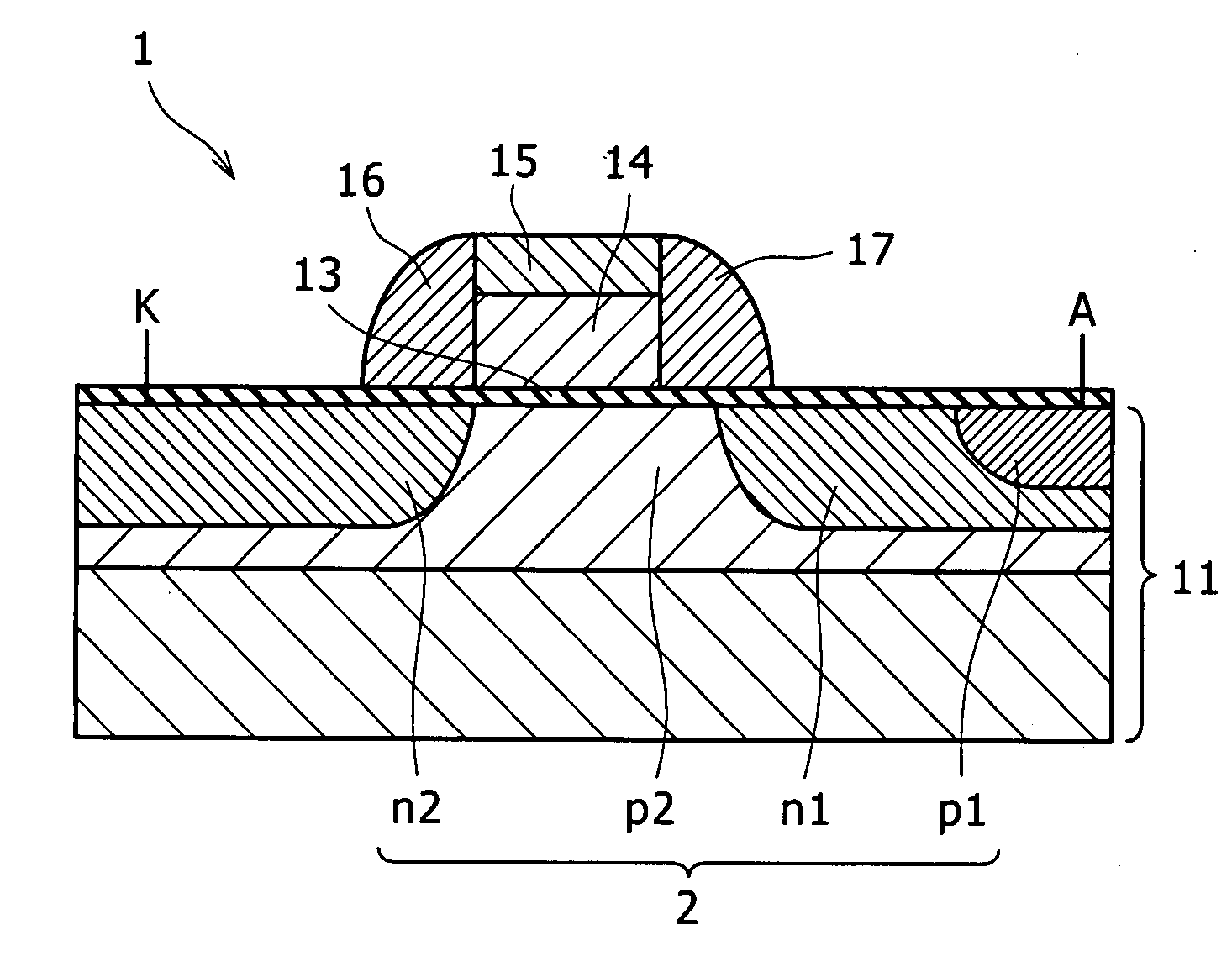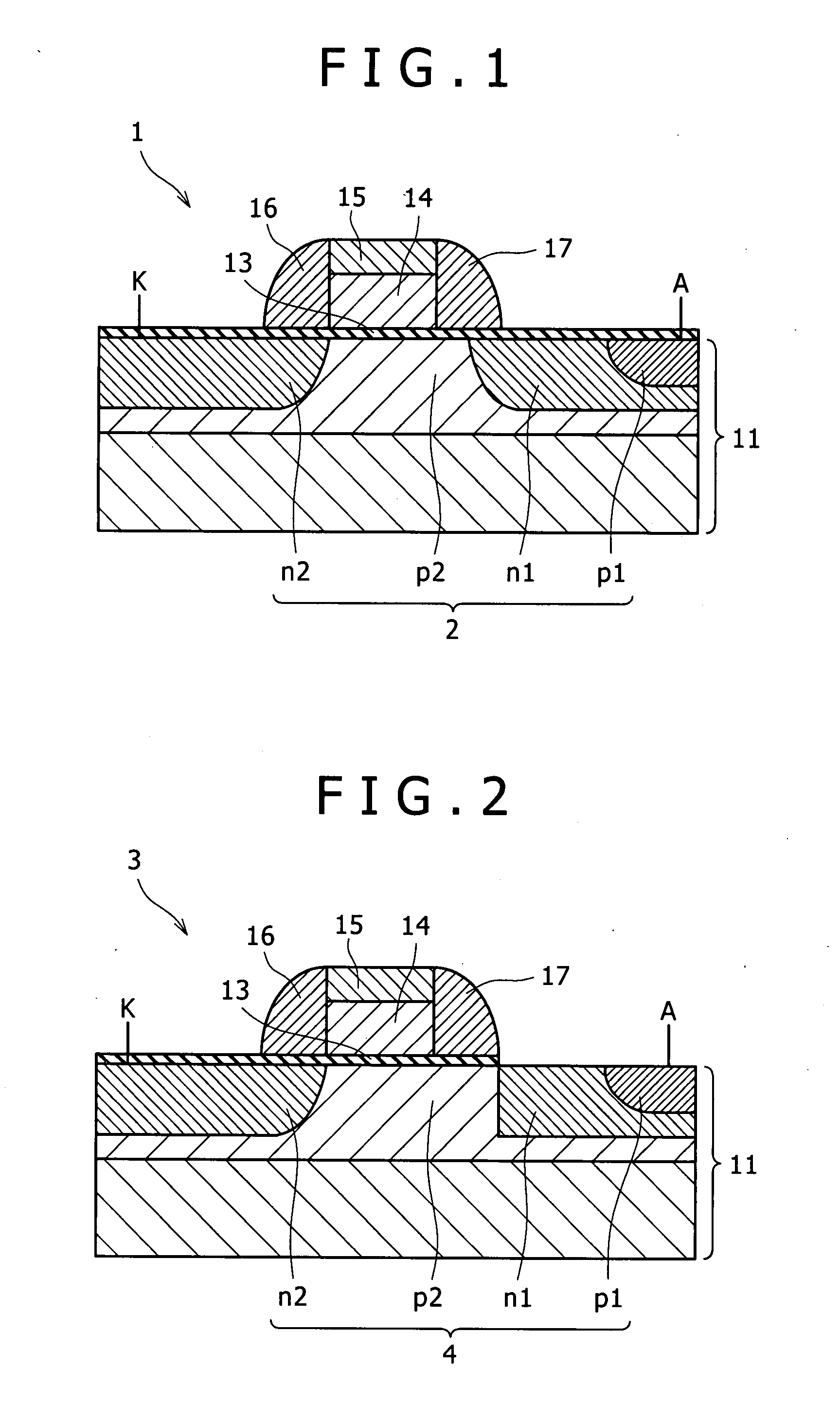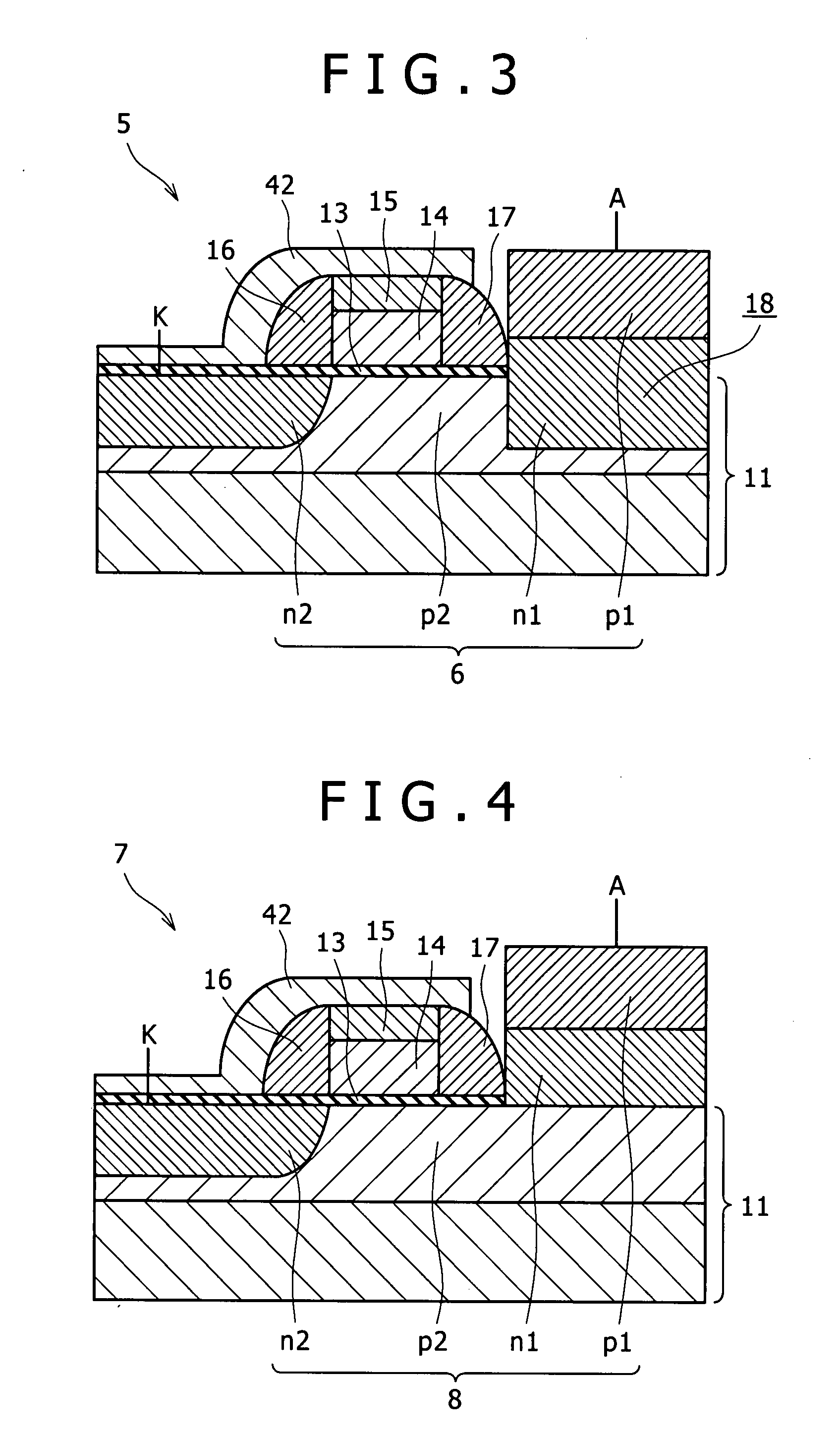Semiconductor device and method for manufacturing semiconductor device
a semiconductor and semiconductor technology, applied in the direction of semiconductor devices, electrical appliances, basic electric elements, etc., can solve the problems of slow switching speed from the on-state to the off-state, and it takes a long time for carriers to be swept out of the n-state, so as to enhance the mobility of carriers in the second region, enhance the speed of switching, and increase the speed of sweeping of carriers
- Summary
- Abstract
- Description
- Claims
- Application Information
AI Technical Summary
Benefits of technology
Problems solved by technology
Method used
Image
Examples
first embodiment
[0042]A semiconductor device according to one embodiment (first embodiment) of the present invention will be described below with reference to FIG. 1 as a sectional view of a schematic structure.
[0043]As shown in FIG. 1, a semiconductor device 1 includes a thyristor 2 arising from sequential joining of a first region (hereinafter, referred to as a first p-region) p1 of a first conductivity type (hereinafter, defined as the p-type), a second region (hereinafter, referred to as a first n-region) n1 of a second conductivity type (hereinafter, defined as the n-type) opposite to the first conductivity type, a third region (hereinafter, referred to as a second p-region) p2 of the first conductivity type (p-type), and a fourth region (hereinafter, referred to as a second n-region) n2 of the second conductivity type (n-type). Details of the semiconductor device 1 will be described below.
[0044]A germanium layer 12 is formed on a semiconductor substrate 11. In this germanium layer 12, the sec...
second embodiment
[0055]A semiconductor device according to one embodiment (second embodiment) of the present invention will be described below with reference to FIG. 2 as a sectional view of a schematic structure.
[0056]As shown in FIG. 2, a semiconductor device 3 includes a thyristor 4 arising from sequential joining of a first, region (hereinafter, referred to as a first p-region) p1 of a first conductivity type (hereinafter, defined as the p-type), a second region (hereinafter, referred to as a first n-region) n1 of a second conductivity type (hereinafter, defined as the n-type) opposite to the first conductivity type, a third region (hereinafter, referred to as a second p-region) p2 of the first conductivity type (p-type), and a fourth region (hereinafter, referred to as a second n-region) n2 of the second conductivity type (n-type). Details of the semiconductor device 3 will be described below.
[0057]In a semiconductor substrate 11, the second p-region p2 of the first conductivity type (p-type) i...
third embodiment
[0067]A semiconductor device according to one embodiment (third embodiment) of the present invention will be described below with reference to FIG. 3 as a sectional view of a schematic structure.
[0068]As shown in FIG. 3, a semiconductor device 5 includes a thyristor 6 arising from sequential joining of a first region (hereinafter, referred to as a first p-region) p1 of a first conductivity type (hereinafter, defined as the p-type), a second region (hereinafter, referred to as a first n-region) n1 of a second conductivity type (hereinafter, defined as the n-type) opposite to the first conductivity type, a third region (hereinafter, referred to as a second p-region) p2 of the first conductivity type (p-type), and a fourth region (hereinafter, referred to as a second n-region) n2 of the second conductivity type (n-type). Details of the semiconductor device 5 will be described below.
[0069]In a semiconductor substrate 11, the second p-region p2 of the first conductivity type (p-type) is ...
PUM
 Login to View More
Login to View More Abstract
Description
Claims
Application Information
 Login to View More
Login to View More - R&D
- Intellectual Property
- Life Sciences
- Materials
- Tech Scout
- Unparalleled Data Quality
- Higher Quality Content
- 60% Fewer Hallucinations
Browse by: Latest US Patents, China's latest patents, Technical Efficacy Thesaurus, Application Domain, Technology Topic, Popular Technical Reports.
© 2025 PatSnap. All rights reserved.Legal|Privacy policy|Modern Slavery Act Transparency Statement|Sitemap|About US| Contact US: help@patsnap.com



